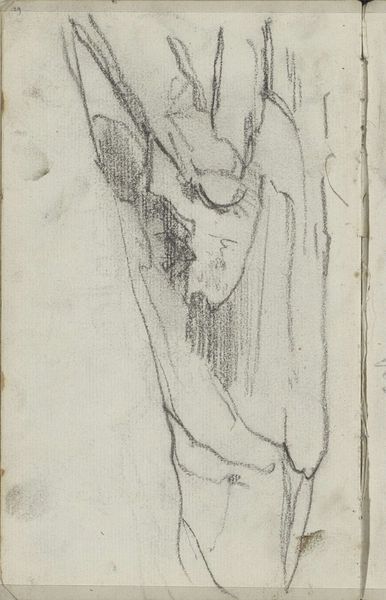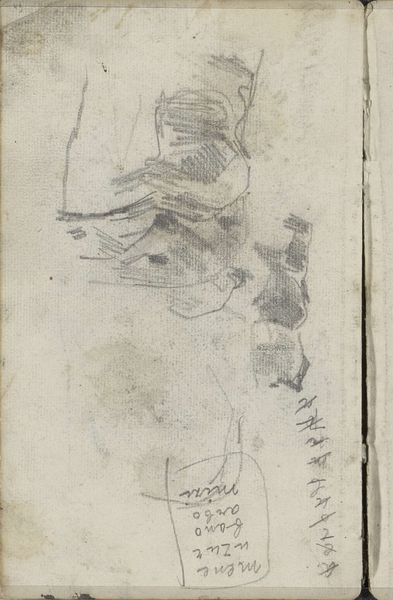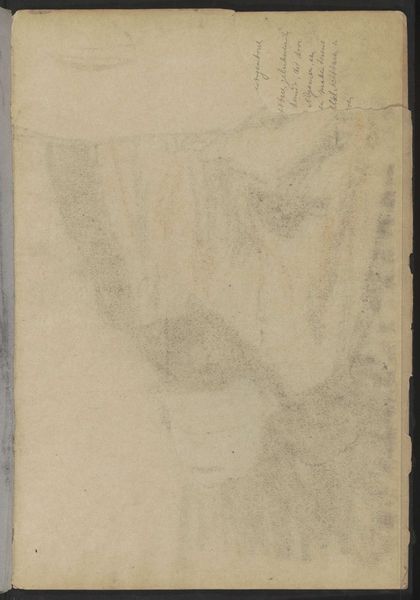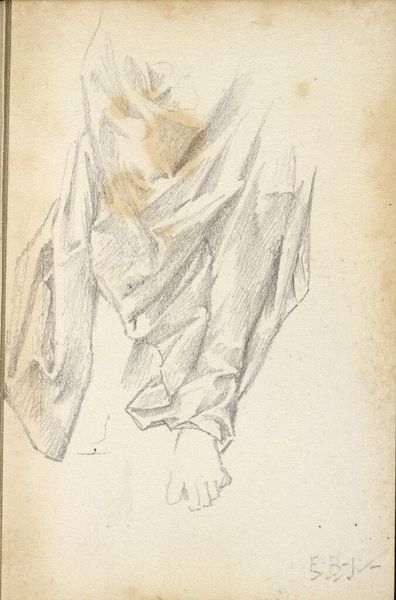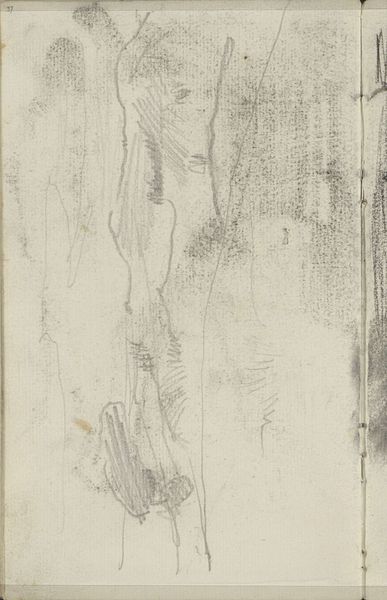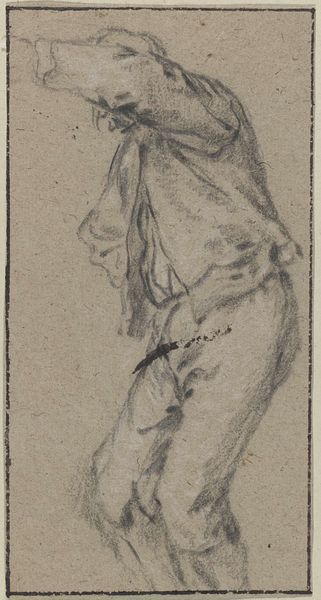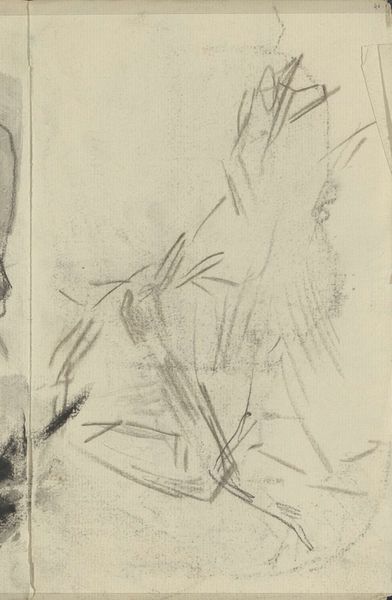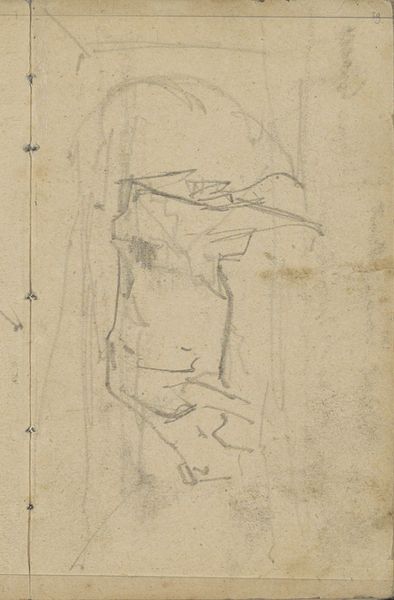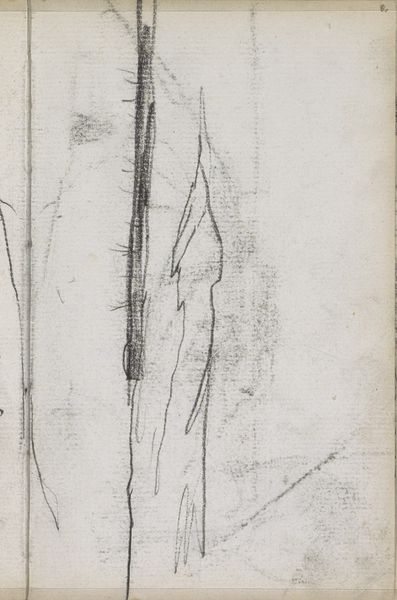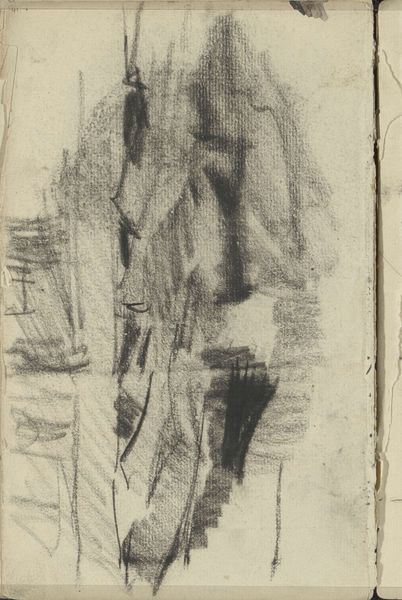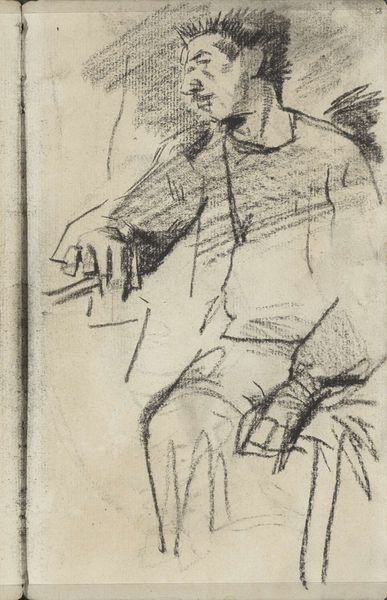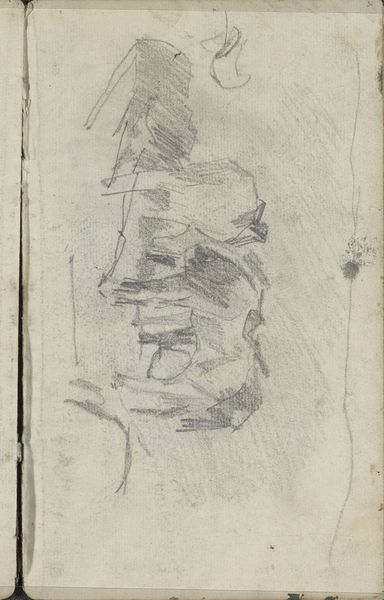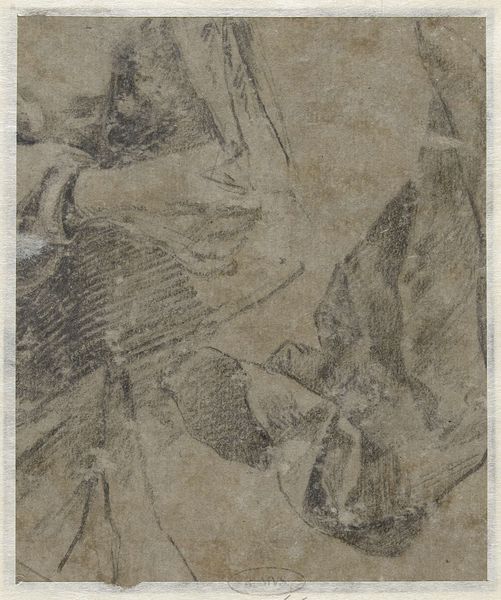
Dimensions: height 197 mm, width 114 mm
Copyright: Rijks Museum: Open Domain
Curator: This drawing, created around 1895 by George Hendrik Breitner, is called "Pianospelende man," or "Man Playing Piano," and is currently held in the collection of the Rijksmuseum. Editor: It's stark, even gloomy. The lines are so immediate and raw, it captures a mundane domesticity weighted down by its sketchiness. Curator: Yes, it is precisely that feeling of immediacy which is so striking. The drawing itself, done in pencil, displays Breitner's masterful control of line, achieving form and shadow with deceptive ease. He suggests the light falling across the man's back and the music stand, highlighting the almost architectural construction of the composition. Editor: I am most curious about Breitner's process. The grade of pencil and paper really lends an aura of temporality. It feels more like a study than a final work, doesn't it? You can almost feel Breitner figuring out the ergonomics of the piano playing. Consider how that relates to musical instruments crafted by laborers. What type of labor did Breitner seek to reflect in the depiction? Curator: Certainly, this evokes a sense of a fleeting moment, but I find myself drawn to the deeper compositional elements. Consider how the verticals of the music stand and the man's body intersect with the horizontal of the piano. The play of positive and negative space creates a balanced asymmetry that lends a dynamic quality to an otherwise still scene. Editor: And within that dynamic balance, there is that stark realism that defines the context in which this man played the piano. Who built it? From what materials was it built? What did that process involve? All that tactile history exists with him in that room. Curator: That's a valid point. While the materiality of the piano’s making underscores its presence, Breitner's work stands out by transforming a rather conventional subject into an exploration of pure form, light, and the inherent poetry of everyday life. Editor: I see your point too. It also made me rethink our reliance on industrialization when examining Realist and Impressionist movements, it does go further than what meets the eye.
Comments
No comments
Be the first to comment and join the conversation on the ultimate creative platform.

